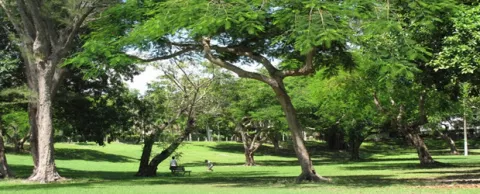
The urban mobility landscape is changing far faster than we would have thought just a few years ago. Many cities and their transit agencies are focusing on providing seamless multi-modal transit networks that include first and last-mile solutions (like microtransit and bike sharing) that minimize inconvenience by offering door-to-door service (or nearly so). And some of those jurisdictions, like the Miami-Dade region, are looking at connecting existing and new greenways and bike and pedestrian paths with their transit networks.
Of course the barriers to those strategies are often limited city funds to pay for the improvements and differences of opinion about how they can be equitable — available for everyone. And add to that abbreviated list of challenges a dramatic surge in bike sharing, dockless bikes and electric scooters from extremely competitive startups in several major cities. It's abundantly clear that the future of mobility will be very different from what it is now. The story below highlights some of today's urban mobility trends as well as ideas and issues cities should address now so they have control over what that future mobility will look like and how it will serve their citizens. — Doug Peeples
The Miami-Dade region has seen three years of continuous decline in bus and Metrorail ridership. Its transportation department and city officials have been looking at a variety of ways to turn that trend around, including soliciting privatization proposals for expanding service in the six corridors identified in the city's 2016 Strategic Miami Area Rapid Transit (SMART) Plan.
More than one approach to a solution
But that's not the only tactic the region could employ. Earlier this month the Miami-Dade Transportation Planning Organization asked for funding to evaluate how to connect bike and pedestrian paths with the SMART Plan. In other words, a SMART Trails program that would help resolve a number of mobility issues the county's transit network hasn't adequately addressed, explained Steven Wernick in a Miami Today article. Wernick is a board member for Friends of the Underline, a 10-mile park and urban trail that would be a candidate for the Smart Trails program. "Linking first- and last-mile solutions is critical. It's for people of all ages, abilities, modes of transportation and, especially in my heart, kids — and that's our future, of course."
The county also recently purchased an unused railroad corridor from a private company to create a six-mile linear greenway that would enable more than 34,000 people living nearby quick access to parks, schools, transit centers and more greenways.
That holistic approach to integrating all forms of mobility is gaining momentum because it offers convenience, enhanced livability and a way to incorporate a city's natural assets and other benefits. However, another trending development may be more problematic.
What to do about all those bikes and scooters that keep showing up on city streets
Bike sharing has also been an extremely popular mobility option and first- and last-mile solution with cities and citizens. But for a variety of reasons the recent surge of dockless bikes (not secured at a docking station) and electric scooters has caused problems for a number of cities.
With several startups fiercely competing in a promising and growing market, many cities have experienced finding dockless bikes and scooters on their streets without warning. As many sources report the attitude seems to be one of better to ask for forgiveness than permission — meaning at least some of the companies providing the bikes and scooters don't have permits to set up shop on city streets.
Austin, Denver and San Francisco are among the cities that have banned the vehicles until the companies obtain permits, or reduced the numbers they will allow until officials figure out how to effectively regulate them. San Francisco will limit the number of electric scooters to 1,250 for six months as it works on formulating its regulations. The Los Angeles Department of Transportation wants to prohibit dockless bikes from within three miles of existing or planned city bike share stations.
Two recent developments further underscore the popularity of dockless bikes and scooters. Ride hailing service Lyft will buy Motivate, the largest bike sharing operator in North America. And competitor Uber has invested heavily in scooter provider Lime in a recent funding round and will offer scooter rentals through the company's app.
Speaking of regulation…
There is help for city officials in a quandary over how to handle the abrupt proliferations and bikes and scooters. The National Association of City Transportation Officials (NACTO) this week released Guidelines for the Regulation and Management of Shared Active Transportation. While praising bike sharing for the good it can do, NACTO Executive Director Linda Bailey also said it would be most successful when cities and providers work out the details together. "Bike share is a true transportation success story in cities, with over 130 million rides to date in just a few years. Bike share, and other active transportation systems, have been most successful when they are planned hand-in-hand with cities."
NACTO's specific guidelines and policies for managing the vehicles sets minimum standards for cities, including:
- permitting frameworks
- city/company communications mechanisms
- standards for communicating with the public
- data requirements
- minimum equipment safety standards
- customer privacy standards
The guidelines also offer recommendations on evaluating conditions, incentive-based permitting and more.
Doug Peeples is a Portland, Oregon-based writer specializing in technology and energy. Follow @smartccouncil on Twitter.



